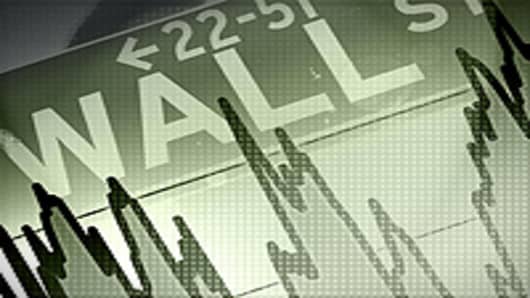An automated stock trading program suddenly flooded the market with millions of trades Wednesday morning, spreading turmoil across Wall Street and drawing renewed attention to the fragility and instability of the nation’s stock markets.
While the broad stock indexes quickly recovered and ended the day slightly down, it was the latest black eye for the financial markets. The runaway trading suggests that regulators have not been able to keep up with electronic programs that increasingly dominate the supercharged market and have helped undermine investor confidence in stocks.
Traders on Wednesday said that a rogue algorithm repeatedly bought and sold millions of shares of companies like RadioShack , Best Buy
, Bank of America and American Airlines, sending trading volume surging. While the trading firm involved blamed a “technology issue,” the company and regulators were still trying to understand what went wrong.
The debacle comes after the botched Facebook initial public offering on the Nasdaq exchange in May and the aborted effort in March by another exchange, BATS Global Markets, to bring its own stock public. The episodes, along with the flash crash of 2010 when the market lost trillions of dollars of value in minutes, have stoked suspicions that stocks are safe only for specialists, and sometimes not even for them.
“The machines have taken over, right?” said Patrick Healy, the chief executive of the Issuer Advisory Group, a capital markets consulting firm. “When events like this happen they just reaffirm that these aren’t investors, these are traders.”
The errant trades began hitting exchanges almost as soon as the opening bell rang and came from a single New Jersey broker that specializes in computer-driven trading, the Knight Capital Group . Shares of more than 100 companies, including big names like Alcoa, Citigroup and Ford suddenly spiked up or down. The New York Stock Exchange had most of the mistaken orders, but all of the nation’s exchanges executed trades for Knight and all agreed to cancel the trading in six stocks that had especially extreme movements.
One of the six, Wizzard Software, saw twice as many shares traded in the first half-hour as there were during all of Tuesday, artificially catapulting its stock more than 300 percent, according to the data firm Nanex.
The trades placed by Knight may have left the firm with millions of shares of overpriced stocks that quickly lost their value after the chaos ended, but the company did not comment on its potential losses. The firm’s own shares ended the day down 32 percent amid concerns about disgruntled customers and lawsuits.
Knight is one of many companies whose fortunes have risen as regulators made a series of changes over the last 15 years that have opened up the markets to new exchanges and trading firms that use computer programs, or algorithms, to execute thousands of trades a second. High-speed firms use the algorithms to make money from small changes in stock prices and now account for more than half of all stock trading.
But the changes have also introduced instability into the system, which was made clear in the flash crash. After that event, the Securities and Exchange Commission set out to add safety valves to the system. But the turbulence on Wednesday reinforced the belief that regulators had not been able to keep up with the growing sophistication and speed of the market they were overseeing.
“You think there is somebody watching the control panel somewhere,” said Larry Tabb, head of the Tabb Group, a market research firm. “We still don’t have a firm grasp over our market infrastructure.”
The most important change that the S.E.C. made after the flash crash was to introduce circuit breakers that are supposed to halt trading if a stock’s price makes extreme movements. The circuit breakers, though, do not start working until 15 minutes after trading opens, so they could not catch swings that happened in the first minutes of trading Wednesday.
In addition, the circuit breakers are programmed to respond to changes in the price of shares, not changes in the number of shares being traded, so they did not stop much of the unusual trading.
In the end, trading was halted in five stocks: Molycorp , Corelogic , Kronos Worldwide , China Cord Blood and Trinity Industries .


